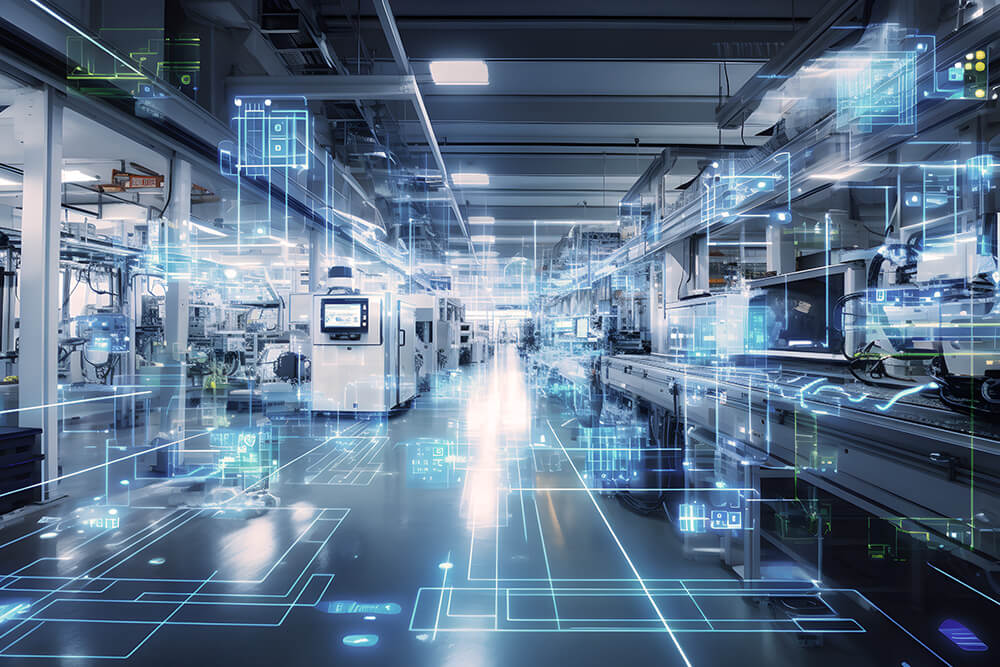Exploring the Future: How AI Could Impact Workers' Compensation
November 3, 2023
With the rising popularity of artificial intelligence (AI), take a look at how this evolving technology could affect workers' compensation.
With the rising popularity of artificial intelligence (AI), take a look at how this evolving technology could affect workers' compensation.

Artificial intelligence (AI) performs a variety of functions that mimic the human mind, such as observing, interacting, problem-solving, etc. As its popularity surges, AI has started to take shape in our everyday lives and processes.
This evolving technology has the potential to change not only how we interact with one another in the workplace, but how we prevent and manage occupational injuries. From addressing employee injuries, bolstering recovery process and minimizing workers’ compensation expenses, AI could improve safety and other work-related processes.
When employees are injured on the job, providing prompt treatment is crucial. With AI technology, workplace incidents and potential safety hazard-related injuries can be quickly identified. For example, computer vision tools can continuously monitor the workplace for risks, alerting management to potential hazards before they cause harm.
With a quick response time, organizations can address employee injuries by providing a faster diagnosis, improving assessment accuracy and creating personalized treatment plans for recovery.
These advancements can benefit injured employees, provide better claim management and faster claim resolutions, while also cutting down on workers’ compensation costs. With real-time alerts and continuously monitoring work conditions, preventive measures that are already in place can be enhanced.
In addition to helping organizations address employee injuries, AI can prove valuable throughout workers’ recovery journeys. The technology can equip them with the resources and support needed to regain their health.
By leveraging wearable devices and sensors, AI enables real-time monitoring, providing doctors with immediate feedback to adjust treatment plans accordingly. As AI continues to evolve, there is also potential for advanced rehabilitation solutions.
For example, the development of enhanced 3D designs/printing for casts, prosthetic parts and other devices can revolutionize the healing process, allowing for personalized recovery. With a personalized approach, employees can recover at a faster pace and reduce workers’ compensation costs for organizations.
AI can play a crucial role in minimizing organizations’ overall workers’ compensation expenses by proactively preventing and mitigating potential claims. Specifically, this technology could provide cost-saving opportunities in the following ways:
Through coding capabilities and data analysis strategies, AI may be capable of reviewing past workers’ compensation claims to provide in-depth investigation of related injuries. This could help identify key causes of workplace incidents, distinguish primary diagnoses for claims, detect possible medical conditions among injured employees and determine treatment-related cost drivers.
With those results, AI could offer guidance to help organizations take proactive steps to address potential issues and reduce the likelihood of future claims.
Medical services and treatments can vary among healthcare providers. While claims adjusters may recommend certain doctors for treating injured employees, AI can assist with provider selection based on the claimant’s location and the provider’s rating.
According to industry data, utilizing AI technology to direct injured employees to high-quality providers can help organizations reduce workers’ compensation claim costs by up to 15%. This feature could lead to better outcomes for injured workers by ensuring they receive the best care and achieve optimal recovery.
AI technology could identify possible irregularities during an employee’s recovery. By examining treatment records, AI can find information pertaining to workers’ compensation claims, such as procedures or medications administered for injuries that typically do not require such interventions.
This can assist in preventing injured employees from undergoing unnecessary treatments and safeguard organizations from incurring additional workers’ compensation costs associated with such services.
According to industry research, approximately 80% of workers’ compensation claims involve minor injuries that do not require specialized medical treatment. However, some organizations tend to direct injured employees to specialists for most occupational ailments.
With the help of AI, organizations can easily determine whether specialist treatment is necessary. By saving time and cost during recovery process, organizations can prevent workers’ compensation claims from becoming overly complex.
AI could significantly enhance organizations’ workers’ compensation programs. By facilitating improved injury detection and response measures, implementing advanced recovery methods, and establishing cost-effective workers compensation process, AI can help quickly identify severe claims that require early intervention, reducing the risk of litigation.
However, the implementation of AI technology can be expensive and is constantly evolving in new directions. With it brings the potential for unknown risks. For example, concerns about AI-related liability issues and data privacy exposures have been steadily increasing.
Considering this, organizations should seek guidance from trusted experts such as legal counsel and their insurance broker to evaluate their specific workers’ compensation program requirements before embracing AI and other related technology. Contact a trusted advisor for additional resources on workers’ compensation.